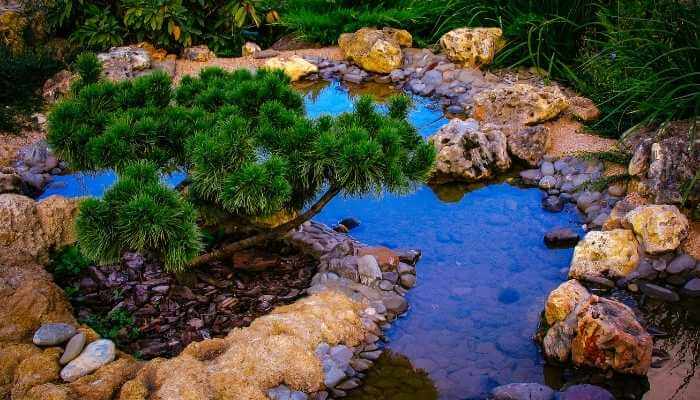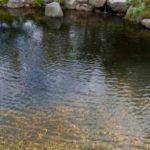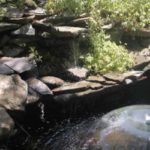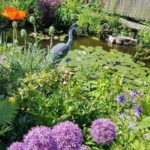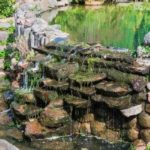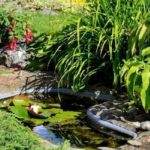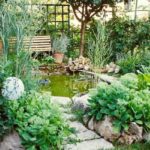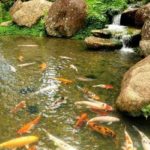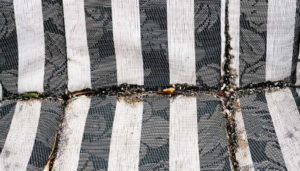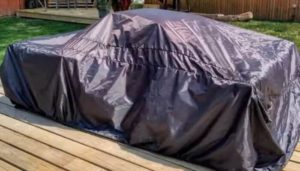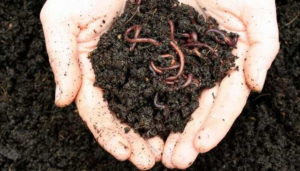Even though the addition of a garden pond didn’t make my listing of best backyard projects to increase the value of your home, it came close. Why? Because you can add a small garden pond for a relatively reasonable price tag and so long as the landscaping is done well, it can add a lot of value to the property.
Adding a garden pond to your backyard can benefit you by adding to the aesthetic & value as well as helping with conservation & relaxation. However, garden ponds take a lot of maintenance, can encourage pests, may grow algae, and can smell bad if not maintained properly.
For more detail about the benefits and drawbacks of adding a garden pond to your backyard, keep reading.
Garden Ponds Can Be Inexpensive and Add to the Landscaping Value
Garden ponds can be surprisingly inexpensive to install. Ours wasn’t very large – it held about 500gallons of water and when it was first installed, cost only $200 for the liner, $150 for the decorative stone, and $85 for the pumps. The filters were DIY and cost maybe $50 beyond that. So less than $500 and the labor setting aside time to do it.
We had it redone with an elaborate waterfall and that cost us another $500. But we truly enjoyed the pond while we had time to take care of it. In most cases, adding something like this before the sale of a home can add at least 1% value. You can go smaller or larger, I would just be careful of going so large that it becomes a hassle and doesn’t add value.
Did you ever consider conservation when you began thinking about adding a garden pond? Well, let me explain. A garden pond provides a store of water for the rest of your plants (including your garden) during drought season. So long as it’s positioned correctly, it can catch all of the rain run-off from the rest of the yard.it will also benefit all the landscaping around it by maintaining moisture for those plants.
Your Garden Pond May Add to the Aesthetic of Your Backyard and Help with Relaxation
Adding to the aesthetic of your landscape is just great. It makes your outdoor living space even more inviting. In my opinion, nothing compares to the sound of babbling brooks and a fountain in a garden pond imitates that wound quite well.
Due to the ambient sound, it can make your stay nearby, especially if you have a fountain installed in the pond, more relaxing. If you have fish and flowers in the pond, you can really wind up getting into a meditative state while enjoying your water feature.
Because it can be a great way to learn about the life of the creatures that live in and around the water feature, having a pond can be great for a family with kids. However, it might also be a bit of a danger for smaller children, and adult supervision is always a necessity for them.
Do Garden Ponds Attract Pests?
Yes. Unfortunately, a source of water is an invitation to wildlife. And that means both the wanted kind of wildlife and the unwanted kind of wildlife. So, what are we talking about here? Well, rats and mice for one thing. Roaches love places with water and a good hiding spot and most garden ponds have both.
So long as you keep your pond skimmed and the water aerated and pumping, mosquitos shouldn’t be an issue. That’s not to say that the mosquitoes won’t try to lay their eggs in the water, though. All kinds of insects will do this, including damselflies, midges, water striders, and dragonflies.
At our pond, we never really had an issue with rats or mice. We had all kinds of frogs and toads, though. And more than once we had small fish eaten. My mother-in-law had a pond and she kept losing fish and didn’t know what was happening until she saw a clever egret enjoying a meal one day (long-legged waterfowl).
If you pay a lot to stock your pond with lovely fish and put in the time to maintain that ecosystem for them, losing your stock can be an expensive way to learn about the pests your pond has invited into your backyard.
How Much Trouble Is It to Maintain a Garden Pond?
The setup is the largest cost, thanks to the construction, initial equipment, and the treatment of the water. Once it’s set up, you will need to be prepared to change out about 10% – 15% of the water from the pond every week.
When you add water to your pond, you should always look into getting it tested to be sure there are no chemicals in it to worry about – especially if you have fish in your pond. You can get your own testing kit and see what problems might be happening in your pond water. Here are the normal values of pH and substances you want to see in a pond you have plants and fish in:
| pH | 7.0 – 8.0 |
| Nitrite | 0 to < 5 part per million (ppm) |
| Ammonia | 0 to 1 part per million (ppm) |
| Chlorine | 0 or as close to 0 as possible |
You also need to have pumps and filters in your pond to help keep impurities out. Those pumps need to be kept going and the filters will need to be cleaned and maintained. This should happen at least monthly. If you want to know more about maintaining your pond water, look into this article on the kind of water to use in garden ponds.
Do Garden Ponds Smell?
Stagnate water can stink. That’s why it’s always best to have a pump and a filter going in your pond to keep the water moving at all times. And if you can somehow add a fountain to it, that’s all the better. It adds decoration and more oxygen to the water.
Why is oxygen important? Without enough oxygen, aerobic bacteria can’t break up waste from animals and plants at the bottom of ponds. Therefore a different kind of bacteria has to take up the job, and it’s called anaerobic bacteria. When this bacteria processes waste from the bottom of the pond, they give off CO2 and hydrogen sulfide – and that smells like a rotten egg.
So if you get that smell, it means your water is too stagnate and doesn’t have enough oxygen and you need to clean your filtration, maybe add another pump to aerate the water or add a fountain to help. So long as your water has enough oxygen, it shouldn’t smell bad.
How Can I Keep Algae from Growing in My Garden Pond?
First, let’s go over prevention. You can keep algae from even beginning in your garden pond by keeping the pond clean of any extra debris. That means, the weekly use of a small sludge net or a pool skimming net to get out any leaves, grass clippings, or dropped blooms.
When I had a garden pond, I added bundles of barley straw to my pond in the spring to discourage algae growth. How? Well, this type of straw creates a specific compound that’s close to hydrogen peroxide when it decomposes. And algae don’t like those chemical compounds.If you need it to work more quickly, you can get this in liquid form.
Speaking of hydrogen peroxide, you can also use this to kill algae that are already there in your pond. The measurements are as follows:
1/2 cup (118ml) of 3% hydrogen peroxide per 100 gallons (378 liters) of pond water
You should never pour any of these compounds near your fish because they could cause damage when there’s too much in one area. Always stir the water when you add it or do as I did and pour it slowly into your fountain for a good dispersal.
The barley straw works when you already have algae, too – it’ll just take a few weeks. But, while you’re waiting on this to work, you can begin removing any algae with nets and gloves. You can also remove algae from the sides of your pond by just using a brush of some kind.
While you’re trying to get rid of an algae problem, rinse your filters and pumps daily.
In Conclusion
I hope this article can help put some of your worries to rest over adding a garden pond to your backyard, And if it didn’t, I hope you were able to come to a practical decision on whether to add this kind of water feature to your backyard or not. My goal was to lay out the facts for you because I want you to see both the advantages and disadvantages of installing a garden pond on your property.
